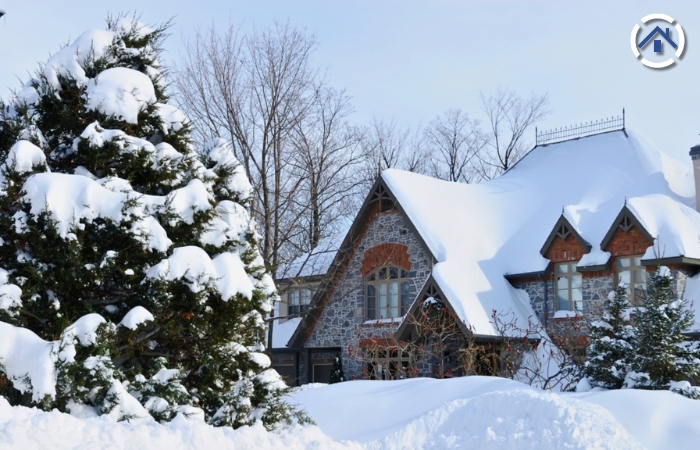
Have you ever wondered what keeps your home safe from the harsh elements all year round? Your roof is the first line of defense against weather damage, and just like any other critical part of your home, it requires regular maintenance to stay in top condition. Neglecting roof maintenance can lead to costly repairs and even more severe structural damage. So, how often roof needs inspection to ensure it remains sturdy and reliable?
Determining the optimal frequency for roof inspections is essential for maintaining your roof's integrity and prolonging its lifespan. Experts generally advise having your roof inspected at least twice a year, specifically in the spring and fall.
Conducting inspections during these seasons allows you to catch and address any damage that may have occurred during the harsher winter or hot summer months. This proactive approach ensures that any necessary repairs are made in a timely manner, preventing minor issues from escalating into major problems as you prepare for the more extreme weather conditions ahead.
Post-Storm Inspections: Severe weather conditions such as storms, heavy snowfall, hail, or high winds can cause significant damage to your roof. It's crucial to conduct an inspection immediately after such events to identify and address any issues like missing shingles, leaks, or even structural damage.

Older Roofs: The age of your roof plays a significant role in determining the frequency of inspections. For roofs that are over 10 years old, more frequent inspections—perhaps every three to four months—might be necessary. Older roofs are more susceptible to wear and tear, and early detection of problems can prevent costly repairs or premature replacement.
Pre-Sale Inspections: If you're planning on selling your home, a roof inspection is a critical step to ensure your home is in the best possible condition for potential buyers. A pre-sale roof inspection can identify and address any issues that could deter buyers or reduce your home's market value. It also provides transparency and confidence to buyers, showing that the home has been well-maintained.
Pre-Purchase Inspections: When buying a home, a roof inspection is essential to understand the condition of the roof and anticipate any future repairs or replacements. A thorough inspection by a professional can reveal hidden issues that might not be visible during a standard home tour. Knowing the roof's condition can influence your buying decision and potentially the negotiation process.

Knowing when to schedule a roof inspection is crucial for maintaining the health of your roof. Here are some clear indicators that it’s time to have your roof inspected:
Shingles Missing, Cracked, or Curling: One of the most obvious signs of roof damage is the condition of your shingles. If you notice that shingles are missing, cracked, or curling, it's a strong indication that your roof is deteriorating and needs professional attention. Damaged shingles can lead to leaks and further structural damage if not promptly repaired. Regularly inspecting your roof from the ground or using binoculars can help you spot these issues early.
Water Stains on Ceilings or Walls: Water stains inside your home are often a sign of a roof leak. These stains usually appear as discolored patches on your ceilings or walls and can vary in size and shape. If you notice any water stains, it’s crucial to have your roof inspected immediately to locate and repair the source of the leak before it causes more extensive damage to your home's interior, such as mold growth or structural weakening.
Leaks or Sunlight Visible Through the Roof Boards: Your attic can provide vital clues about the condition of your roof. During an inspection, look for any signs of water leaks, such as damp insulation or water stains on the attic floor. Another telltale sign is sunlight shining through the roof boards. If light can penetrate, so can water, which means your roof’s protective barrier is compromised. Regularly checking your attic, especially after heavy rain or storms, can help you catch problems early and prevent costly repairs.
A thorough roof inspection involves examining both the exterior and interior components of your roof. Understanding what to expect can help you better prepare and appreciate the comprehensive nature of the inspection process.
During the exterior inspection, a professional will closely examine various elements of your roof's surface and structure:

The interior inspection focuses on the components inside your home that can indicate roof issues:
Regular roof inspections are a critical component of home maintenance, helping to preserve the structural integrity and extend the lifespan of your roof. By scheduling inspections at least twice a year—preferably in the spring and fall—you can proactively address any damage caused by seasonal weather extremes. Additionally, it's essential to inspect your roof after major weather events, as well as more frequently if your roof is older or if you're planning to sell or buy a home. Recognizing the signs that indicate the need for an inspection allows you to catch and resolve issues early, preventing costly repairs and potential structural damage.
For comprehensive and accurate roof assessments, it’s advisable to consult with a professional roofing contractor. Professional inspectors have the expertise to identify both obvious and hidden problems, ensuring a thorough evaluation of your roof’s condition. They can provide detailed reports and recommendations for necessary repairs or maintenance. Whether you’re maintaining your current home, preparing to sell, or considering a purchase, working with a professional ensures that your roof remains a reliable barrier against the elements, safeguarding your home and investment.